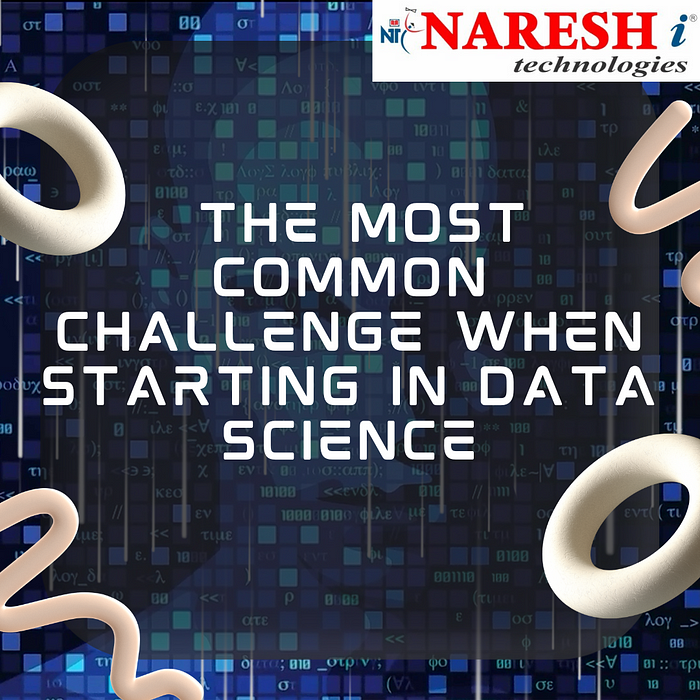The Most Common Challenge When Starting in Data Science
- Get link
- X
- Other Apps
Data science is a fascinating and rapidly growing field that offers immense opportunities for those who venture into it. However, for many beginners, the journey into data science can be both exciting and daunting. Among the various challenges that aspiring data scientists face, one stands out as the most common: the overwhelming breadth of knowledge and skills required.
Understanding the Challenge
Data science is inherently interdisciplinary, combining elements of statistics, programming, domain expertise, and machine learning. For newcomers, this diversity often translates into:
- Uncertainty About Where to Begin: The field encompasses numerous tools, programming languages, algorithms, and frameworks. Beginners often feel lost deciding whether to start with Python, R, SQL, or focus on statistical foundations.
- Information Overload: The abundance of online courses, tutorials, and books can be overwhelming. It’s easy to fall into the trap of trying to learn everything at once, leading to burnout and frustration.
- Imposter Syndrome: Many beginners feel inadequate, comparing themselves to experts who seem to know it all. This can result in self-doubt and hesitation to move forward.
- Balancing Theory and Practice: Striking the right balance between theoretical concepts and hands-on experience is a common hurdle. Beginners often struggle with understanding complex algorithms while simultaneously trying to implement them.
Strategies to Overcome the Challenge
The key to navigating the vastness of data science lies in adopting a structured approach and staying persistent. Here are some practical strategies:
- Start with a Clear Roadmap:
- Focus on foundational skills such as Python or R, statistics, and data manipulation with tools like Pandas or SQL.
- Gradually move to machine learning and visualization techniques.
- Break Down the Learning Process:
- Divide the learning journey into manageable segments. For example, dedicate time to mastering data cleaning before moving on to model building.
- Work on Real-World Projects:
- Applying skills to real-world problems is the fastest way to learn. Kaggle competitions, open-source projects, and datasets like those from UCI or government portals can provide practical exposure.
- Seek Mentorship and Join Communities:
- Engaging with experienced professionals and joining data science communities (e.g., on LinkedIn, Reddit, or Slack) can provide guidance, support, and valuable insights.
- Accept That Learning is Iterative:
- Data science is a field where you never truly “finish” learning. Embrace the mindset of continuous improvement and growth.
- Focus on One Area at a Time:
- Instead of trying to master everything, specialize in one area, such as exploratory data analysis or machine learning, before expanding your skill set.
- Leverage Resources Wisely:
- Choose a few high-quality resources and stick to them. Popular platforms like Coursera, edX, and YouTube channels can offer comprehensive guidance without overwhelming you.
Overcoming the Psychological Barrier
The mental aspect of learning data science is equally important:
- Combat Imposter Syndrome: Remember, every expert was once a beginner. Progress at your own pace without undue comparison.
- Celebrate Small Wins: Acknowledge and celebrate milestones, such as completing a project or understanding a complex concept.
- Stay Curious: Cultivate a growth mindset and maintain curiosity about solving problems.
Conclusion
Starting in data science can feel like navigating an ocean of information, but it’s a challenge that can be overcome with a focused approach, persistence, and the right mindset. By breaking down the journey into achievable steps, engaging with the community, and continuously practicing, beginners can transform their initial overwhelm into confidence and expertise. The key is to start, stay consistent, and enjoy the process of learning and discovery.
For More Details Visit : https://nareshit.com/courses/data-science-online-training
Register For Free Demo on UpComing Batches : https://nareshit.com/new-batches
- Get link
- X
- Other Apps


Comments
Post a Comment